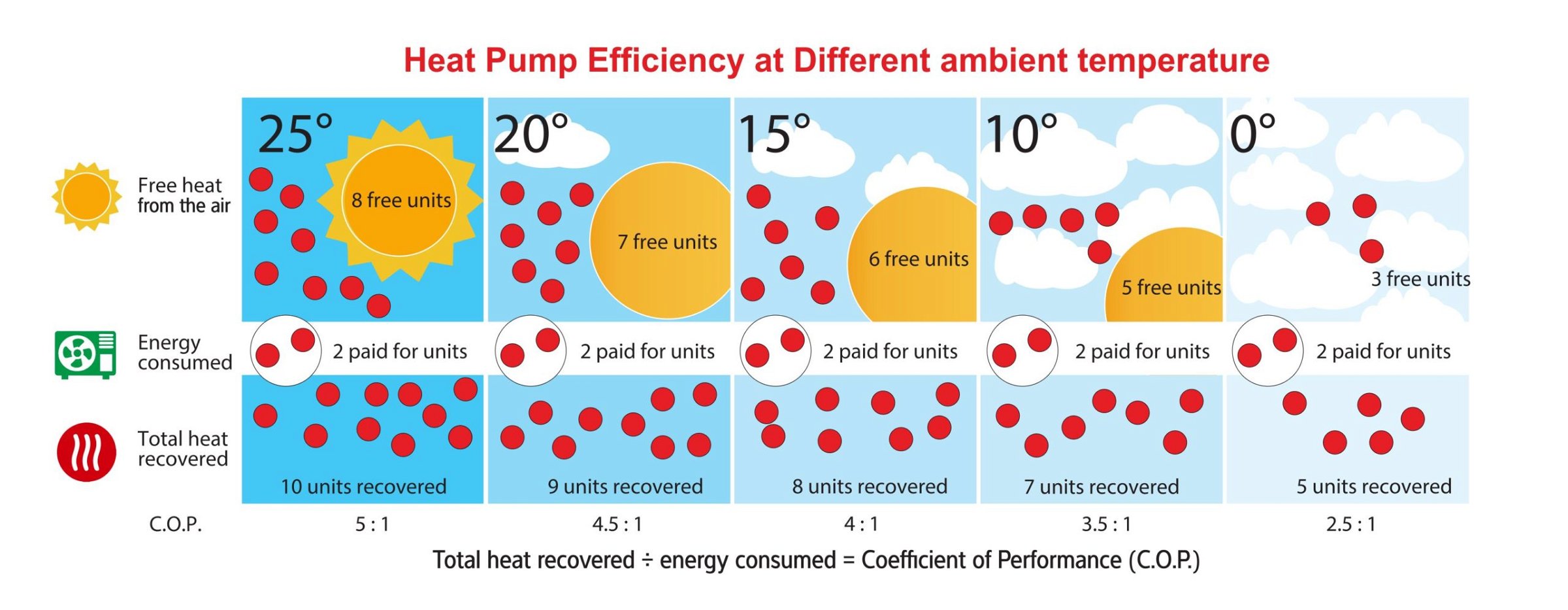Water heater is an indispensable household appliance in modern family life. The most common water heaters include electric water heater, gas water heater, solar water heater, and of course, air source heat pump water heater known for its energy conservation. A lot of people say that air source water heaters are energy-efficient, so what value can explain their energy conservation?
This is the concept that VINDSOL will introduce to you – COP value of air source heat pump water heater. After answering the following questions, we will know more about it: What is the meaning of COP? What does the COP value represent? What is the general COP value of air source water heater? How to calculate the COP value?
In fact, COP value is a very important parameter in the household appliance industry. Among the air source water heaters, COP represents Coefficient of Performance, an expression of the efficiency of a heat pump. When the air source heat pump water heater is in circulation, its COP refers to the ratio of the heating capacity of the compressor to the shaft power PE of the compressor under the same working condition.
Simply put, the COP value of air source water heater is actually the ratio of heating capacity realized by the heat pump system to input power. Under the same working condition, the greater the ratio, the higher the efficiency and energy saving of the heat pump system.
The COP value of an efficient and energy-saving air source heat pump water heater at room temperature is usually required to be ≥ 3.8. Users want to know the source of COP value, which can be calculated by a formula under standard working conditions.
Consumers can also get the COP value in a simple way. For example, if the heating capacity of heat pump water heater is P1 (KW), and the rated power of the heat pump is P2 (KW), then COP = P1/P2.
The COP value of air source heat pump water heater is not only affected by the external environment, but also by various factors, such as the performance coefficient of the compressor and the system matching of the heat pump unit. The so-called system matching refers to the matching performance of compressor, condenser, evaporator, throttling mechanism and automatic control system. From the COP value, we do not only get the energy efficiency ratio of air source water heater, but also the matching performance of internal accessories.
Compared with traditional water heaters such as gas water heaters and electric water heaters, energy conservation and environmental protection are the biggest advantages of air source heat pump water heaters. Because air can be everywhere and the heat in the air is available at any time, only a small amount of electric energy is needed to produce a continuous stream of hot water. But if the COP value of air source water heater does not meet the requirements, the energy-saving effect is impossible to satisfy the needs of customers.
When consumers are choosing air source heat pump water heaters, they can identify the value of COP through detailed understanding and select the most appropriate products from a wide range of air source heat pump brands to achieve comfortable and energy-saving effects.

